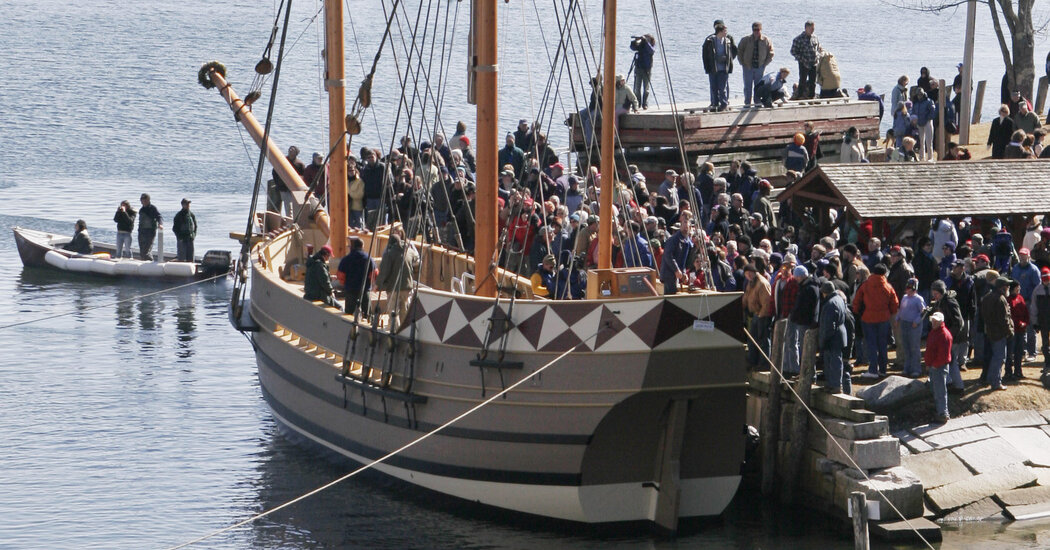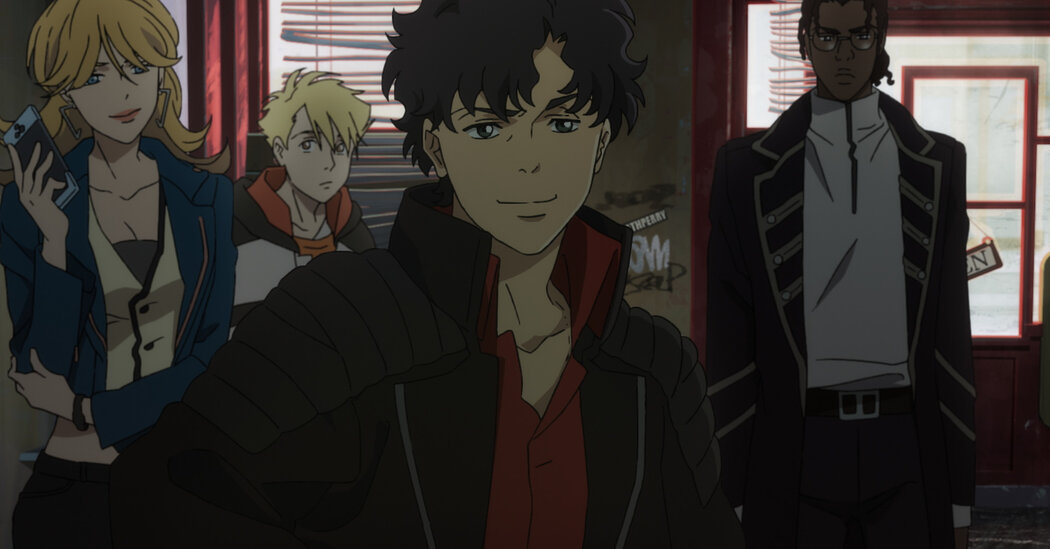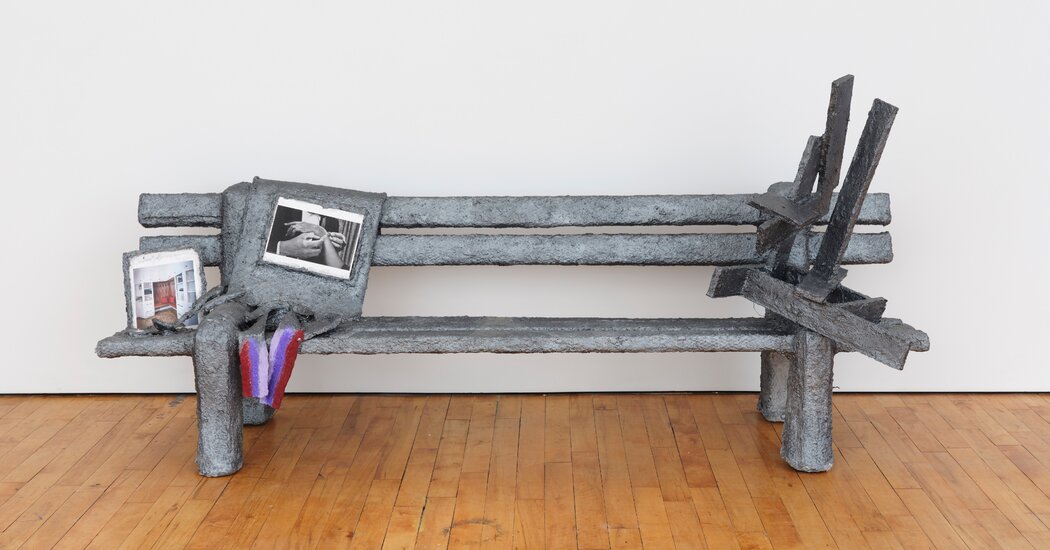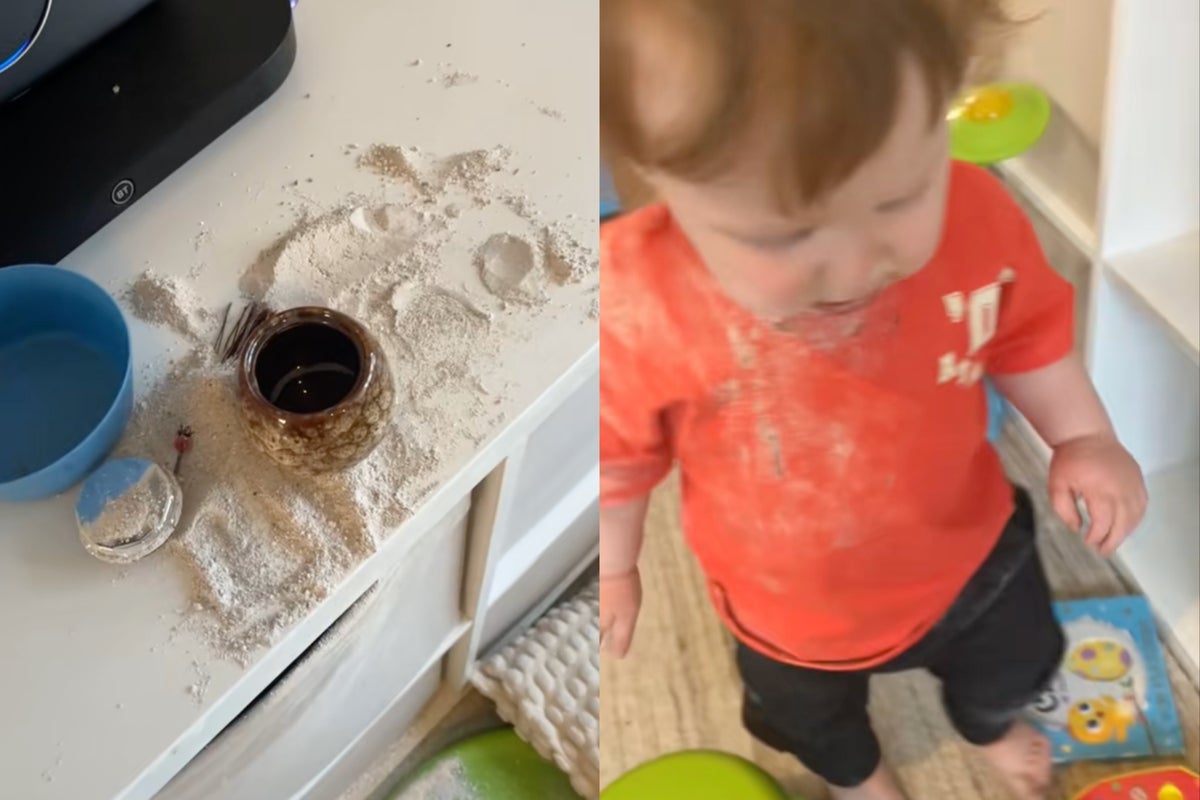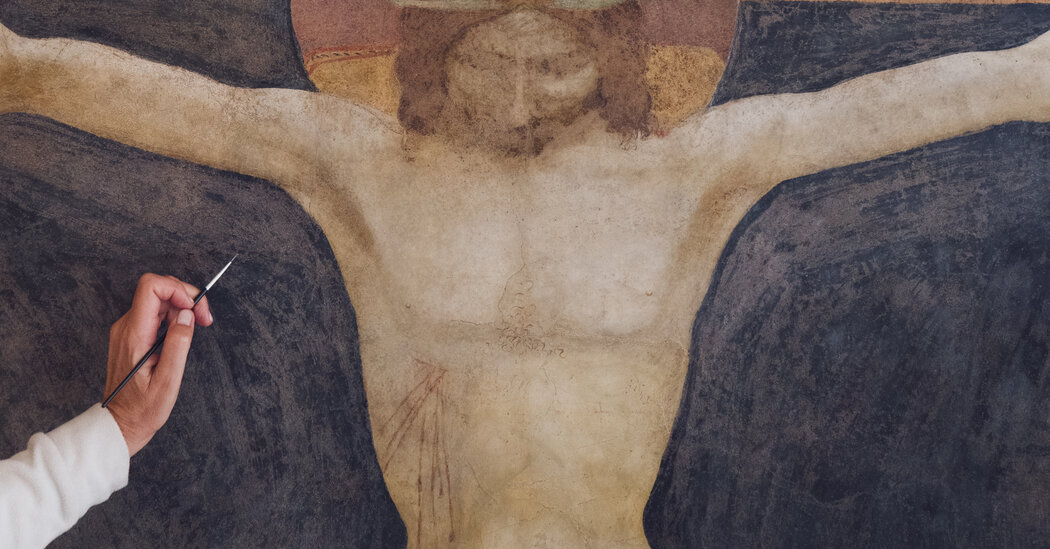
A 600-Year-Old Masterpiece Gets Some Much-Needed Love
When Steven Woloshin, an American doctor, first saw the 600-year-old fresco of a Crucifixion by the Renaissance master Fra Angelico inside a cloistered convent in January last year, he was blown away.
“I immediately thought this is the most amazing thing I’ve seen,” he said recently. The image’s simplicity and power overwhelmed him, he said.
His second thought was the that fresco needed some love.
That’s when Woloshin turned to Dr. Camilla Alderighi and Dr. Raffele Rasoini, the two cardiologists who had brought him to see the fresco in the Convent of San Domenico in Fiesole, the hilltop town overlooking Florence, and said, “Well, why not restore it?”
A few years ago, bonding over a mutual love of things cultural, the three formed an organization called Bottega Belacqua that aims to pull off “improbable dreams,” Woloshin said. The restoration of the fresco was their first official venture in Italy.
It was not so improbable, as it turns out.
On a recent morning, two restorers scrambled up scaffolding in the convent’s chapter house to put some finishing touches on their work. The fresco has been restored in time for a major Fra Angelico exhibition that opens at Palazzo Strozzi and Museo di San Marco, both in Florence, on Sept. 26. It looks set to be one of the major European art shows of the fall.
The restorers dabbed lightly at the vast blue background that surrounds a lone Christ, his head bent and his hands clutched into fists, a fitting image of meditation for the convent’s former chapter house, where monks once reached the order’s main decisions.
The fresco’s inaccessibility — the convent is still cloistered, so the friars have little contact with the outside world — meant it was not on the radar of many Fra Angelico aficionados. “It was practically unknown,” said Rasoini, also a member of Bottega Belacqua, named after a character shared by Dante and Samuel Beckett.
And it had not been flagged as needing immediate restoration on a list drafted annually by local art authorities. That list is flexible — and long — while funds are always in short supply. Private donors, individuals or groups, are a boon for Italy’s rich, if fragile, cultural patrimony, though state art authorities still oversee privately funded projects.
In the case of the chapter house fresco, Bottega Belacqua was not able to cover the costs on its own, so it turned for help to Friends of Florence, a nonprofit American organization, which immediately pitched in. “We had a donor right away,” said Countess Simonetta Brandolini d’Adda, who co-founded Friends of Florence with her sister.
Cristiana Conti, one of the restorers, said that the most important intervention they had carried out was to reinforce the plaster, which was detaching in several areas. “One of the problems of works found inside convents, in areas that are not so accessible,” is that they can fall into disrepair without much notice, she said.
Alessandra Popple, the other restorer, said it had been a thrill to work on a Fra Angelico in the place it had been painted 600 years before. “There’s something about working on frescoes, because you experience the same things that the artist experienced, the atmosphere is the same,” she said. “It’s a moving experience.”
Though Fra Angelico is arguably best known for the frescoes painted for the Convent of San Marco, in central Florence, “San Domenico was his convent,” said Angelo Tartuferi, until last year the director of the San Marco Museum, which has the world’s biggest collection of works by Fra Angelico. The artist entered the convent as a young friar around 1420, lived there for long periods and returned as its prior in 1450.
The convent had a bumpy ride over the centuries since it was founded in 1406.
So did the fresco: It was plastered over in 1566, when the entire room was whitewashed, perhaps because that style of painting was no longer appreciated, Popple said.
As for the convent, after Napoleon suppressed Italian religious orders, it was sold, along with all the art it housed, to a private family who sold off several Fra Angelico works. Those include a detached fresco of a Crucifixion, now in the Louvre, and another of the Virgin and Child with saints that is at the Hermitage in St. Petersburg, Russia.
The friars eventually bought the convent back and the fresco was discovered in 1881 by the prior, who damaged it “somewhat” while removing the overlying plaster, Popple said. At some point, the bottom part of the fresco was completely repainted, she added. But the figure of Christ was largely original, save for some touches from a previous restoration carried out in 1955, to coincide with the last major exhibition on Fra Angelico in Florence, marking the 500th anniversary of his death.
“I always compare artworks to people” in the sense that some age well and some don’t, Tartuferi said.
“It’s probably a good thing that it had been covered,” said Alderighi, the other Bottega Belacqua doctor, or otherwise it, too, might have been sold off while the convent was privately owned.
Alderighi is married to Rasoini, and they live “down the road” from the convent and had befriended its caretaker, who first showed them the Crucifixion fresco. When Woloshin came to Italy to teach a course on medicine in the media with them, they brought him to see the work.
Eyeing the fresco on a recent March morning, Woloshin said the restoration had been Bottega Belacqua’s “obsession for two years,” and its “first success” in Italy, with hopefully more to follow.
Today, the convent functions as an infirmary for elderly Dominican friars from the area. Eight live there full time under the watchful eye of the sacristan Pietro Guida, who cares for them, as well as the convent and its church. He said that occasionally, well-read visitors came by to see the Crucifixion: “If they knocked, I’d let them in.”
Carl Strehlke, the curator of the Fra Angelico exhibition — which will bring together about 100 works by the Renaissance artist — said he hoped that the convent would find a way to be open during the show so that many more people could see the Crucifixion, as part of a supplementary program. “There’ll be some sort of itinerary to go see things in and around Florence,” he said.
Strehlke had been up the scaffolding during the restoration and he, too, was impressed. “You can tell right away that it’s a major masterpiece by Fra Angelico,” he said. “So it’s a really new discovery, in a funny way. Even though we always knew it was there, no one really looked at it.”



